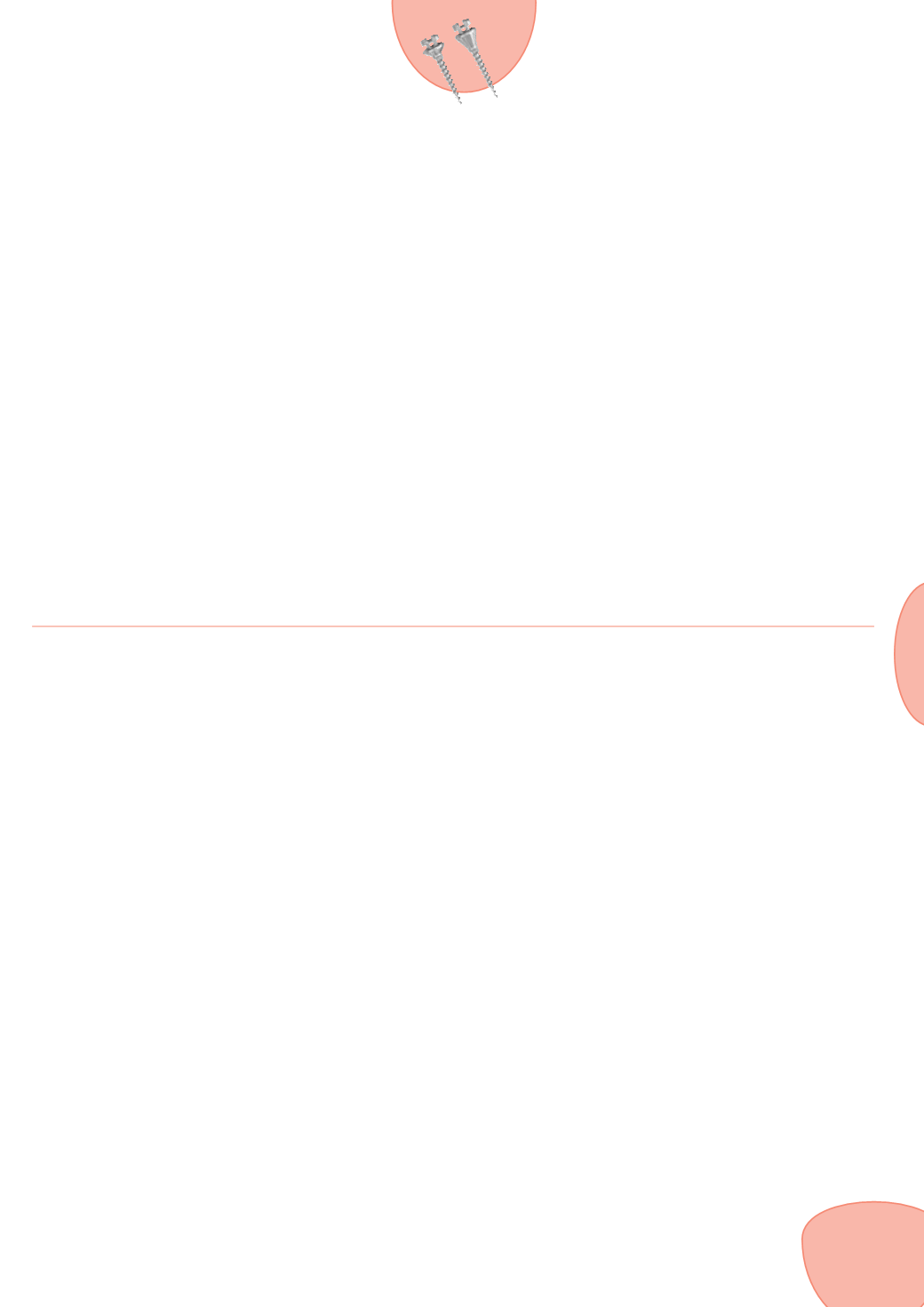
81
To Order Tel: 01274 533233 . Fax: 01274 537663 . Email:
Anchorage, Implants
and Extra-Oral Products
Spider Screw
®
Indications
Spider Screw Anchorage System (SSAS) allows sagittal and vertical movement
of all teeth (intrusion, extrusion, distalization and mesialization) and can be
used for treating the following:
•
Class I, Class II, Class III malocclusion treatment
•
Anchorage Recovery
•
Anchorage Reinforcement
•
Asymmetrical case management
•
Uprighting of upper and lower molars
•
Correction of over erupted teeth (molar, premolar, incisors)
•
Deep bite and open bite conditions
•
Preprosthetic Orthodontic Treatment
•
Borderline cases
•
Orthodontic treatment without patient co-operation (MBGM system)
General Information
The placement of Spider Screws is a procedure requiring specific knowledge of anatomy and technique. It is absolutely necessary
that it is carried out by specifically trained doctors. It is important to know that improper patient selection and/or incorrect
technique can cause placement failure and/or loss of supporting bone.
An effective and complete screening of the patient must be performed and each case carefully evaluated. A very thorough
examination is needed, as well as anatomical reference for the evaluation of bone quantity and quality using radiographic
research (Long Cone Endoral Radiograph, Orthopantograph, Teleradiography, and Computerised Tomography).
Carefully read the instructions for use inside the package before the Spider Screw placement.
The Spider Screw is for single use only and should not be reused. Use only the instruments mentioned in this catalogue, making
sure that all the instruments are sterilized and efficient. It is suggested to disinfect the insertion area and give local anaesthesia as
needed.
It is very important that the clinician attends a training course for a complete overview of all the possible applications, as this
catalogue shows only a few.
Insertion Sites
MAXILLA
Edentulous ridges
Palate
Tuberosity
Interadicular areas
Infrazygomatic crest
MANDIBULAR
Edentulous ridges
Retromolar region
Mandibular ramus
Interadicular areas
Synfisis


